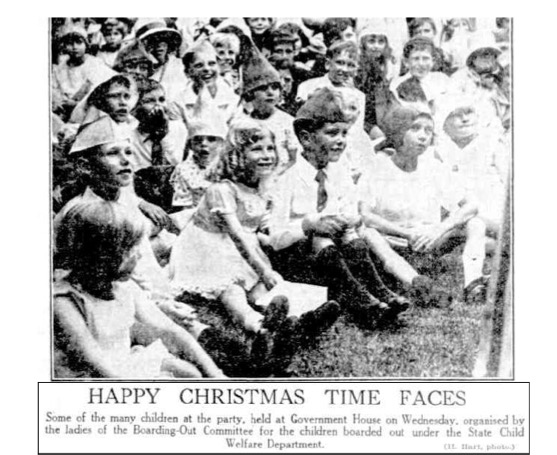
A reformatory was an institution for “criminal” children, later known as juvenile offenders. Reformatories were designed to remove children from adult prisons, as well as to separate children who had committed offences from so-called “neglected” children. The name of this institution reflects the notion that, intercepted early enough, young criminals could be reformed. However, in…

Foster care is a home-based service provided to children and young people up to 18 years of age who are temporarily or permanently unable to live with their families of origin. Foster parents are paid an allowance to help cover the cost of maintaining the foster child. The foster care system was historically managed by…
The terms state ward or ward of the state were legal terms used to describe a child under the guardianship of a state (or territory) child welfare authority. The State, as the ward’s guardian, assumed responsibility for the care, custody and control of the child to the exclusion of parental rights. The various laws passed…

Boarding out was the term used to describe the placement of children and young people in foster care in private homes. Nineteenth century reformers advocated boarding out because it provided more of a family life than the big institutions. Under the boarding out system, government agencies paid foster parents a weekly fee – the boarding…
The child rescue movement was an outgrowth of the evangelical revival in England, it captured the imagination of many Australian philanthropists during the last quarter of the nineteenth century, leaving a particular mark on colonial and state child welfare services. Child rescuers argued that the existing orphanages and statutory organisations were too passive in their…
The Salvation Army Australia came into being in 2018 when the Salvation Army Southern Territory and Salvation Army Eastern Territory merged. The Australian Territory Board of Governance held its first meeting in September 2018. The Salvation Army (also known as The Salvos) continues to provide a range of community services in Australia, including out-of-home care…
The Salvation Army, Australian Territory was established in 1880 when the first members of the church came to Australia. From 1880 until 1907, the Salvation Army Australasian Territory comprised the church’s operations in Australia, New Zealand, Fiji and Tonga. In 1907, the Australian Territory was separated from New Zealand, Fiji and Tonga. In 1921, the…
Infant Life Protection was a program that emerged in response to rising concerns about ‘baby farming’ in the late nineteenth century – this was the practice of infants, usually born to single mothers, being placed in private homes to be nursed and boarded, for a fee. There was a very high mortality rate for ex-nuptial…
Mental deficiency is a term that was commonly used to describe intellectual or developmental disability in the first half of the twentieth century. It was regarded as a disease, and the popular belief was that people who were diagnosed as ‘mentally defective’ needed to be segregated from the community, to receive special ‘care’ and treatment….
“Correspondence files, single number series with ‘B’ [Child Endowment] prefix” is an archival series held by the National Archives of Australia. Its series number is A885. The records in A885 relate to child endowment and family allowances. The records were created by the Commonwealth Department of Social Services. Many of the files document the payment…